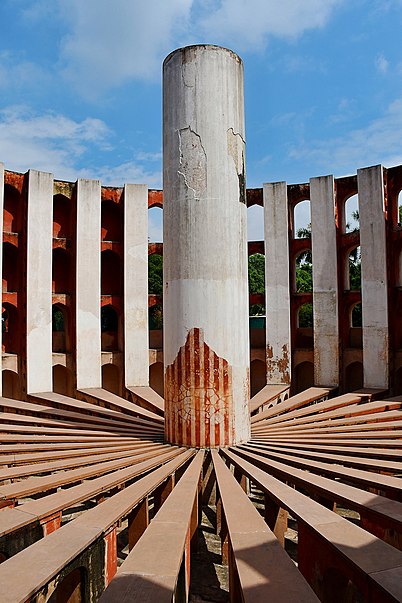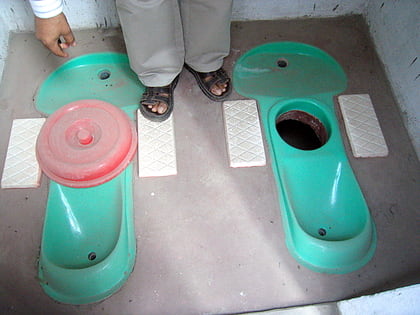Jantar Mantar, Delhi

Facts and practical information
Nestled in the heart of India's bustling capital, Delhi, the Jantar Mantar stands as a testament to the advanced scientific acumen of the 18th century. This remarkable planetarium is not only a historical marvel but also a sophisticated astronomical observatory built by Maharaja Jai Singh II of Jaipur in 1724.
The Jantar Mantar of Delhi is one of five such observatories in India, with the others located in Jaipur, Ujjain, Varanasi, and Mathura. It consists of 13 architectural astronomy instruments, designed to measure time, predict eclipses, track stars in their orbits, and ascertain the declinations of planets. These instruments are colossal structures, with the largest being the Samrat Yantra, a giant sundial that stands at a height of 70 feet and is accurate to within 2 seconds.
This site was constructed to compile astronomical tables and to predict the movement and timings of the sun, moon, and planets. The precision with which these instruments were designed and constructed illustrates the ingenuity and foresight of the Mughal era's scientific community.
The Jantar Mantar in Delhi is more than just an observatory; it's an important historical site that reflects the fusion of science and art. The geometric forms and design serve both functional and aesthetic purposes, making it a unique example of the scientific heritage of India.
Today, Jantar Mantar is a popular tourist destination, attracting scholars, astronomers, and curious visitors from around the globe. It is a protected monument under the Archaeological Survey of India and has been included on the list of UNESCO World Heritage Sites.
The observatory is open to the public all year round and offers a glimpse into the astronomical skills and cosmological concepts of the past. Visitors can explore the instruments and often find local guides who can explain the complex workings and history of this scientific marvel.
Sansad MargNew Delhi (N.D. Charge 4)Delhi 110001
Jantar Mantar – popular in the area (distance from the attraction)
Nearby attractions include: Parliament Museum, National Charkha Museum, Gurudwara Bangla Sahib, Hanuman Temple.
Frequently Asked Questions (FAQ)
When is Jantar Mantar open?
- Monday 6 am - 5 pm
- Tuesday 6 am - 5 pm
- Wednesday 6 am - 5 pm
- Thursday 6 am - 5 pm
- Friday 6 am - 5 pm
- Saturday 6 am - 5 pm
- Sunday 6 am - 5 pm
Which popular attractions are close to Jantar Mantar?
How to get to Jantar Mantar by public transport?
Bus
- Palika Kendra • Lines: 166, 181A, 281, 433, 460, 548, 620, 729 (2 min walk)
- Jantar Mantar • Lines: 349, 378 (3 min walk)
Metro
- Janpath • Lines: Violet Line (9 min walk)
- ONGC Shivaji Stadium • Lines: AEx (9 min walk)
Train
- Shivaji Bridge (19 min walk)
- New Delhi (26 min walk)








 Metro
Metro









